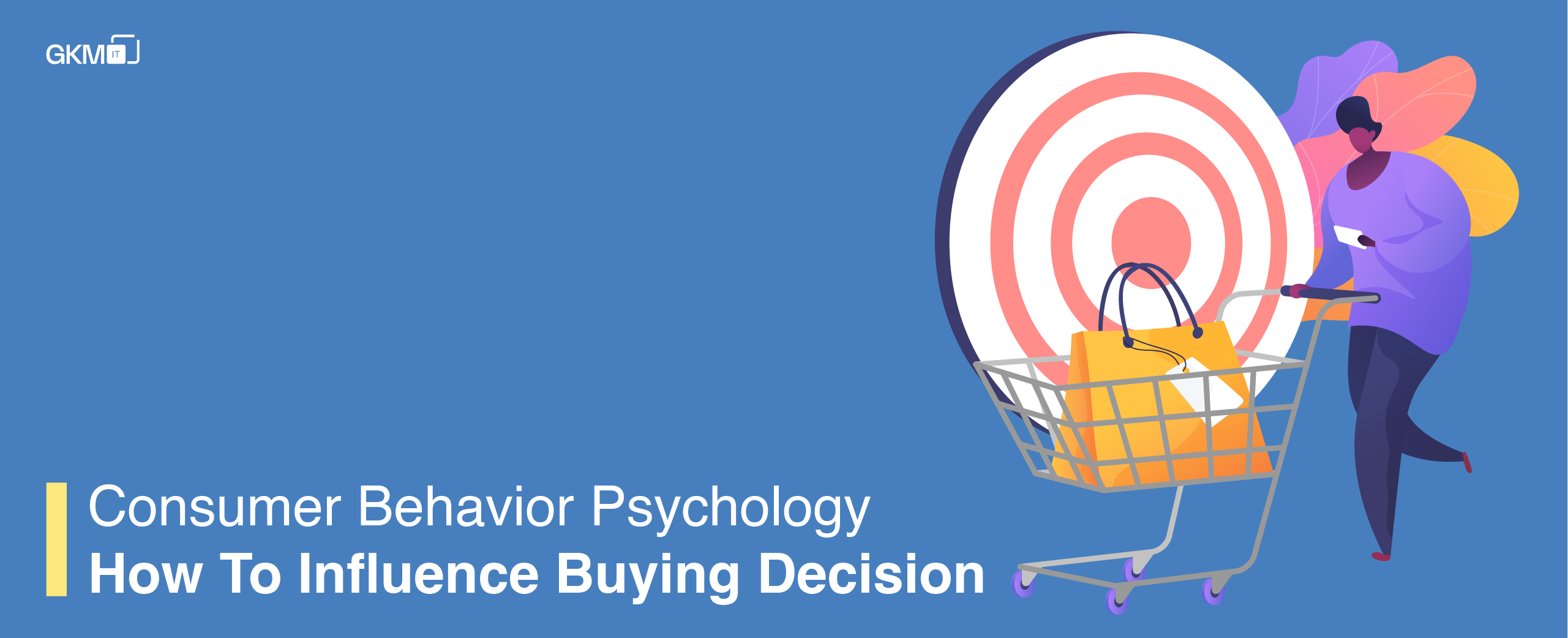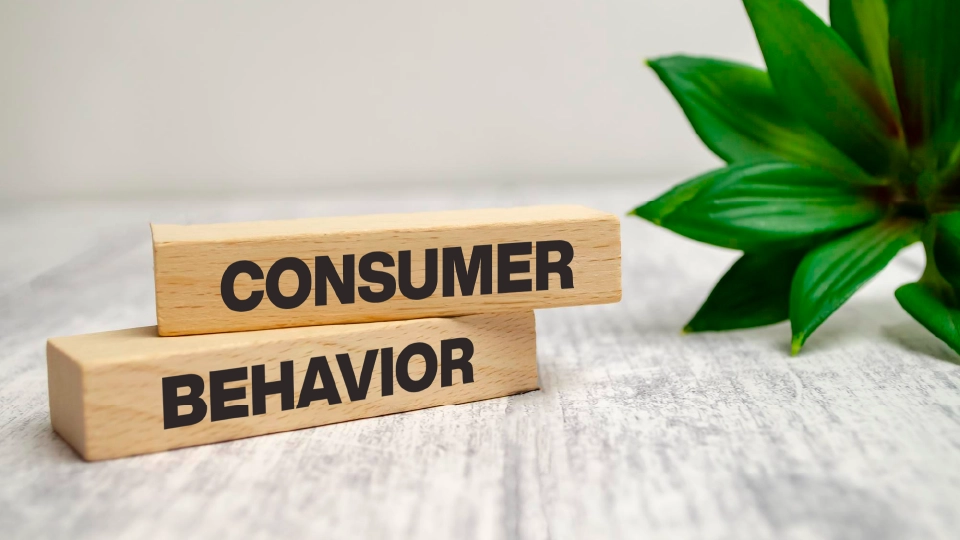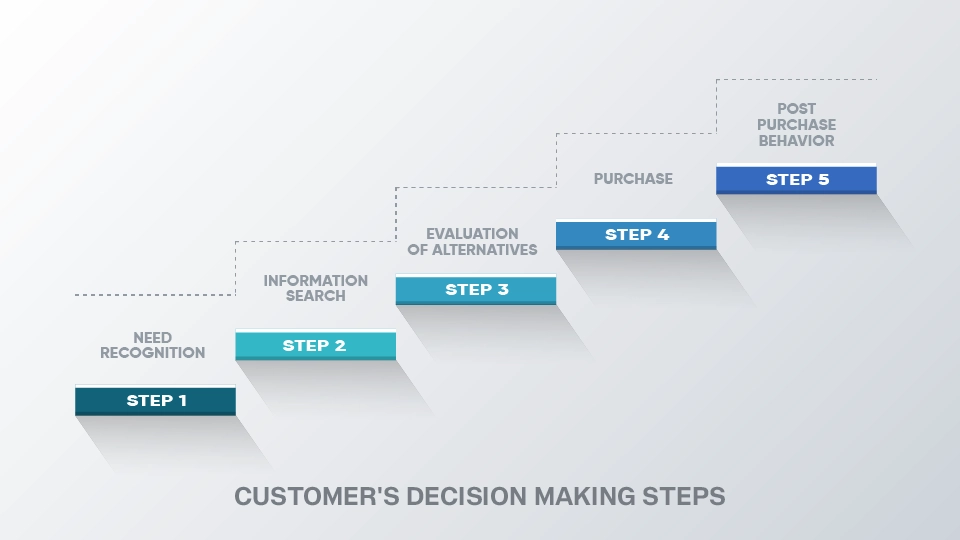
Consumer Behavior Psychology: How To Influence Buying Decision
Get insights into the ever-persistent question about how to get someone to buy your product or services. Leverage consumer behavior psychology to find the best solutions.
“Knowing who your consumers are is great, but knowing how they behave is even better”
Jon Miller
Consumer behavior psychology is a field that not many businesses focus on, but they must. What makes the customer choose one particular product over another? Why would they consider a brand over another? What makes them suggest a product to someone else? You can answer many of these questions if you understand what governs their behavior and the psychology behind buying.
Understanding Consumer Behavior Psychology
 Before we jump to the complex part of understanding consumer behavior, let us first understand what consumer behavior is.
Before we jump to the complex part of understanding consumer behavior, let us first understand what consumer behavior is.
Consumer behavior is the study of understanding how consumers make decisions, what governs their behavior during the decision-making process, and what are the underlying factors that affect their overall attitude toward a brand. This is a comprehensive study that begins when the customer considers your product through the time they discard it.
One part of understanding consumer behavior includes understanding consumer behavior psychology – what goes in their brain that makes them act in a certain way. For businesses, it is essential to understand their consumers, their behavior concerning their company, and what affects them.
Significance of understanding consumer behavior psychology
Why is understanding consumer behavior psychology important for your business? Here are 4 reasons why:
- It will help your marketing team create campaigns that will push them to buy your product/service. For example, a sports merchandise brand may find that consumers prefer online buying as it has discounts, which can be used in the future for in-store promotions.
- An in-depth understanding will impact customer retention rates as business houses realize what drives their customers. Imagine having a slow website that is impacting your buying journey.
- It can help your business predict trends before they occur. This ensures you are always on top of the customer’s mind while they are considering buying.
- It will help your business stay relevant and introduce the products/services that customers want. Nokia failed to understand consumer behavior (which resulted in not being able to predict what changes and features they wanted) which resulted in its obsolescence.
Using Consumer Behavior Psychology For Buying Decisions
Now that we’re aware of the value of understanding consumer behavior psychology, let’s see what factors affect it. These factors include-
- Personal (demographics, income, lifestyle, etc.)
- Social (culture, family background, reference group, etc.)
- Situational (event, urgency, location, etc.)
- Psychological ( beliefs, perception, emotions, cognitive bias, etc.).
Having a consumer survey of all this aids the business in creating the right customer behavior persona.
Information: We will take into account only the psychological factors for this read.
But how is that relevant to the buying decision process? Well, on every step of the decision-making journey, a customer encounters several questions. If you understand their psychology, you can reduce the dissonance and help them make the decision quicker. Let’s understand this better with the 5 step decision-making process.

Step 1: Problem Identification
When consumers make a decision, they first recognize a need or want that they want to be fulfilled. Every purchase begins with a trigger event. Smart marketers start there too. Trigger events can be: biological (like being hungry or being cold), situational ( like getting engaged or getting a new job), emotional (like feeling sad, inspired, or jealous), or social (like fighting with a spouse or a suggestion from a friend).
How to use consumer behavior psychology: When a person has a need/want, they will look for a solution. If they are hungry, they will want food. Restaurants around office areas/coaching institutes are an example of understanding customer psychology and building a product/service around it. This can be in physical terms, or even an online solution. Understand your target group and their motivating factors to delve deeper, and get your customers at this stage.
Step 2: Information Search
Your buyer moves from being oblivious that they even have a problem to being in the market for a new solution. This step is where they look for information, suggestions, references, etc. Customers can be passive (if the requirement is not important & urgent) and active (they need to make a buying decision as soon as possible). Targeting both these groups requires understanding what psychological factors affect them at that position.
Psychological factors that could affect the buying decision at this time are distinctiveness ( focus on USP, innovations), exposure to the product (how many times they see your name), social proof, cognitive bias (did your name occur at the top when they were looking for information), etc.
How to use consumer behavior psychology: An example can be ad-based targeting on search engines, website/landing page, or online business profile to get to your customers first. Understand how they will act, and market accordingly.
Step 3: Evaluation of Alternatives
This is the step where it is you v/s your competitors. The psychological factors of your consumers can make or break your sale at this step as they now use the information to get to action. Factors like need and availability, social proof, recommendation from peers, brand loyalty, personal memory, and perceived value, etc play a major role.
How to use consumer behavior psychology: 92 percent of consumers are willing to trust companies when referrals come from people they know. Imagine the customer is looking to buy a car. They have gathered information, but now are comparing. Your business is based on car selling. You understand customer buying behavior, so you incorporated a compare feature page. This page also includes verified reviews and recent news. You are here indirectly reaching the customer as once they see the value of your website, they will check out your offering on a car they wish to buy.
Step 4: Purchase decision
Once they have compared the options, they will want to finalize the product/service. They may experience doubts and uncertainties. Here’s when your customer experience team, sales team, and marketing team can help. If you understand their pain points in finalizing the decisions, you can convert them into paying people. The purchase decision isn’t the final step of the buying decision process, but if you nail understanding consumer behavior here you have successfully made a sale.
How to use consumer behavior psychology: Risk-aversive customers, for example, tend to buy products that will have lesser risk. A customer trying to buy a car may experience this. If you understand that the majority of consumers in your domain experience this, you focus on tactics to reduce the risk in their minds. This can be through value for money, focus on customer reviews, EMIs, focusing on the safety of the car, and free benefits like service warranty, etc.
Step 5: Post Purchase dissonance
After buying your product/service, they will measure how satisfied they are. This post-purchase evaluation is where you have the chance to turn the customer into a loyal advocate.
If the customer is happy with the product (they psychologically feel empowered, satisfied, and content), they will recommend you to any other friend. If you serve them with consistent quality, you will have loyal customers who will purchase more products from you. This could go negative as well, so have plans in place to handle customer grievances. Customer delight and satisfaction are key to reducing the voice in their head that asks if they bought the right product or service. Your job is to give them experience that reduces this dissonance.
How to use consumer behavior psychology: Even when the process technically ends here, people will always check if you are true to your promises. This end is the first step in their purchase decision process for the next product they buy ( and what you might sell). To hammer the brand here, companies offer feedback calls, extra discounts on the next purchase, follow-ups, return/replacement policies, etc. Knowing your consumers’ behavior can help you find solutions specifically tailored to their needs.
End Note
Understanding consumer behavior psychology and how that can impact the buying decision process is both complex and multifaceted. Step one is always knowing who your target audience is, what factors affect them, and how they react to other products/services when it comes to buying them. Consumer research will help your business understand the underlying facts about your target market, which in turn will help you create the right persona. Refer back to this read once you have your consumer research, and you’ll find the right solution.